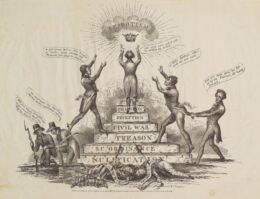The Cancer Within Modern Medicine Part 3: The Modern Medicine Obsession With Unnatural Selection
by Corey Lynn, Corey’s Digs:
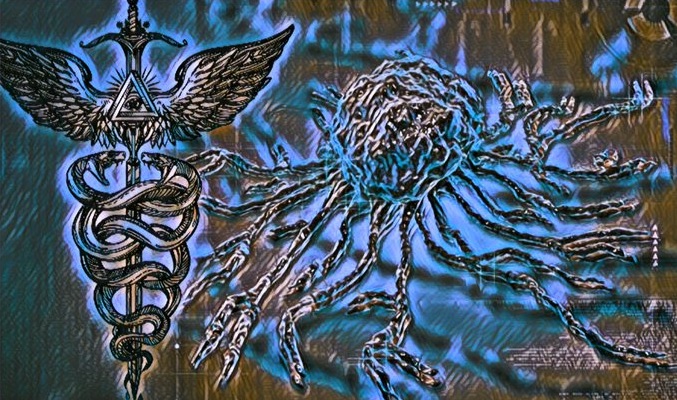 There is a cancer within the world of modern medicine, eating away at the very heart of its original design. Rather than healing the world, this cancer seeks to destroy us from within. As we continue to dissect the cancer within, in this segment of the report, we will focus on the area of eugenics and the eugenicists who have shaped the world of modern medicine since the turn of the 20th century.
There is a cancer within the world of modern medicine, eating away at the very heart of its original design. Rather than healing the world, this cancer seeks to destroy us from within. As we continue to dissect the cancer within, in this segment of the report, we will focus on the area of eugenics and the eugenicists who have shaped the world of modern medicine since the turn of the 20th century.
Special thanks to pathologist and friend, Dr. B, for contributions to this report.
Read Parts 1 & 2: The Cancer Within Modern Medicine

By The Sharp Edge
The Origins of Eugenics and “The Descent of Man”
The concept of eugenics is rooted in the work of Charles Darwin. In his book, the “Descent of Man,” written in 1871, Darwin applied his theory of natural selection to the human species, and concluded, “With savages, the weak in body or mind are soon eliminated; and those that survive commonly exhibit a vigorous state of health. We civilized men, on the other hand, do our utmost to check the process of elimination; we build asylums for the imbecile, the maimed, and the sick; we institute poor-laws; and our medical men exert their utmost skill to save the life of every one to the last moment…Thus the weak members of civilized societies propagate their kind. No one who has attended to the breeding of domestic animals will doubt that this must be highly injurious to the race of man.” Inspired by the theory of natural selection in mankind, Darwin’s half-cousin, Sir Francis Galton, endorsed the concept of “selective human breeding” by coining the term “eugenics.” His book entitled “Heredity Genius” postulated that greatness was inherited, and Galton subscribed to the pursuit of perfecting mankind by eliminating its “undesirables” while reproducing the “desirables.”
The Carnegie Institution and Rockefeller Foundation had deep connections with scientists and academics in Ivy League schools including: Harvard, Yale, Princeton and Stanford. Their influence on science and medicine within academia led to “faked and twisted data to serve eugenics’ racist aims.” The President of Stanford, David Starr Jordan, formed the theory that human qualities and conditions like talent or poverty, were passed on through blood in his 1902 writing, “Blood of a Nation.”
By 1904, the Carnegie Institution opened a Eugenics Records Office in Cold Spring Harbor, New York, with the purpose of collecting data on American citizens, including: race, bloodline, genealogy, personality traits, characteristics, as well as physical and mental health. With full backing from the Carnegie Institution, the Eugenics Records Office was under the direction of H. H. Laughlin, who was a spokesperson for the eugenics movement and lobbied for the restriction of immigration and sterilization of those deemed as “defectives.” The Eugenics Records Office at Cold Spring Harbor Laboratory was the hub of the American eugenics movement, and their research was invaluable in passing several eugenic sterilization laws, including the research of H.H. Laughlin entitled “Eugenical Sterilization in the United States,” which lead to the passage of the Virginia Sterilization Act of 1924. An outspoken eugenicist and managing director of the organization that eventually became the American Cancer Society, C.C. Little, had worked for the Cold Spring Harbor Laboratory for three years after World War I. While serving as President of the University of Michigan, as well as President of The American Eugenics Society, Little published a pamphlet in 1927 revealing their agenda. It states, “One of our friends said recently, ‘You will never be able to make eugenics popular until you can make the man in the street feel the pinch of the defective classes on his pocketbook; now and again some person calls eugenics an impractical ideal and eugenicists, dreamers; and not infrequently do we find those who take no interest in the subject because it is ‘new.’ The facts about eugenics should be known and understood, by all, for as they are, it will appear that eugenics is as old as the race, intensely practical and money saving.” In 1921, C.C. Little also became a founding board member of the American Birth Control League, which eventually became known as Planned Parenthood. The Cold Spring Harbor Laboratory will forever be remembered for their research in the field of eugenics and genetics, such as the Nobel Prize winning discovery of the DNA double helix, made by James Watson and Francis Crick in 1953. James Watson served as president of the lab from 1994 to 2003, but the lab severed ties with the Nobel Laureate over his public statement in 2007 referring to the conditions in Africa as “gloomy,” and adding, “all our social policies are based on the fact that their intelligence is the same as ours – whereas all the testing says not really.”
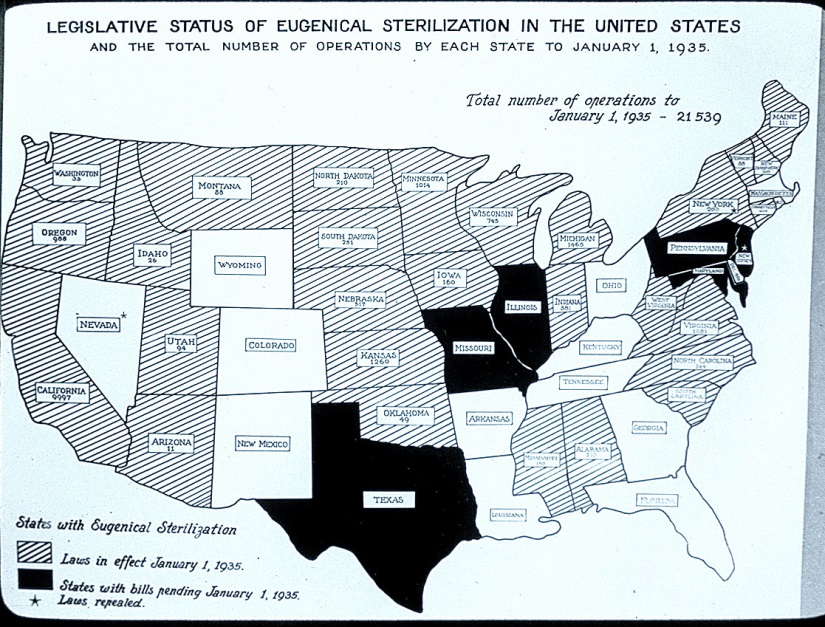
With the implementation of mandatory sterilization of those deemed as socially inadequate by the superintendent of the Eugenics Records Office, Harry Laughlin, the Model Eugenic Sterilization Law was enforced in 30 states as well as Puerto Rico. A 1924 Supreme Court case, Buck vs. Bell, upheld a Virginia law which allowed the state of Virginia to sterilize “mentally defective” individuals. Such was the case for Carrie Buck and her sister – who didn’t realize until her late 60’s that her operation was for tubal ligation rather than appendicitis. In an opinion to uphold the law, Supreme Court Justice Oliver Wendell Holmes wrote, “We have seen more than once that the public welfare may call upon the best citizens for their lives. It would be strange if it could not call upon those who already sap the strength of the State for these lesser sacrifices, often not felt to be such by those concerned, in order to prevent our being swamped with incompetence. It is better for all the world if, instead of waiting to execute degenerate offspring for crime or to let them starve for their imbecility, society can prevent those who are manifestly unfit from continuing their kind. . . . Three generations of imbeciles are enough.” Eugenics sterilization laws were passed in 24 states in America between the 1920’s and 1930’s, as well as in Canada and Sweden. Between the 1930’s and the 1970’s, Sweden sterilized nearly 60,000 people, mostly female. By 1933, California had performed more sterilization procedures, of institutionalized people, than any of the other states combined.
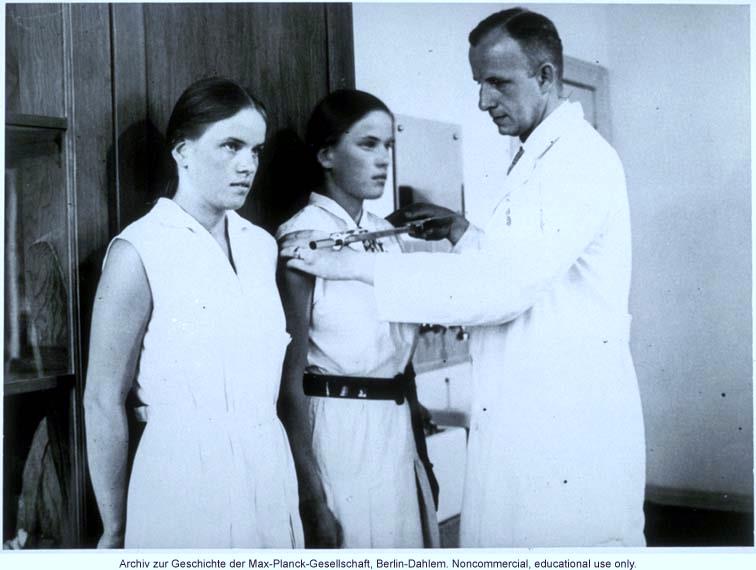
The Carnegie Institution of Washington and the Rockefeller Foundation, along with the Harriman railroad fortune, were the driving forces behind the eugenics movement in the U.S. and around the world. In fact, the Rockefeller Foundation helped found the Nazi German eugenics program. Nazi Germany heavily promoted the concept of eugenics with the sterilization of hundreds of thousands of people, as well as the genocide of millions. Hitler praised the work of American eugenicists as a model for eugenics in Germany and professed that he followed American eugenics legislation very closely, stating, “Now that we know the laws of heredity, it is possible to a large extent to prevent unhealthy and severely handicapped beings from coming into the world. I have studied with interest the laws of several American states concerning prevention of reproduction by people whose progeny would, in all probability, be of no value or be injurious to the racial stock.” Hitler even admired American eugenicist, Madison Grant, in a letter regarding Grant’s book, “The Passing of the Great Race,” by confessing that it was his “bible.” The Rockefeller Foundation fueled the rise of the Nazi eugenics movement through grants donated to German researchers in the amount of $410,000 – a sum that would equate to $4 million dollars by our standards. One donation, in particular, went to research at the The German Psychiatric Institute of the Kaiser Wilhelm Institute, under director Ernst Rudin. In 1932, Rudin was awarded the position of President of the International Federation of Eugenics Organizations and later became the architect of Hitler’s eugenics program. Horrific experiments were conducted at Kaiser Wilhelm during the war, including the examination of brains from hundreds of thousands of disabled victims of the Nazi euthanasia program, as well as research on twins and effects on “later generations of substances toxic for germ plasma.” Josef Mengele was an assistant under Otmar Freiherr von Verschuer, the head of the Kaiser Wilhelm Institute for Anthropology, Human Heredity and Eugenics, who performed atrocious experiments on twins while at Auschwitz, all in pursuit of eugenics and “racial hygiene.” At the end of the war, Verschuer escaped prosecution and by 1949 became a corresponding member of the American Society of Human Genetics. An American geneticist by the name of Hermann Muller, who also conducted research at Kaiser Wilhelm Institute, became the first president for the American Society of Human Genetics in 1949.
It is important to understand the history of eugenics and the role that it has played in shaping science and medicine since the turn of the 20th century, as many of the ideologies and agendas of the members of the early eugenics movement continue to effect modern medicine to this day.
Birth Control and the “Elimination of the Unfit”
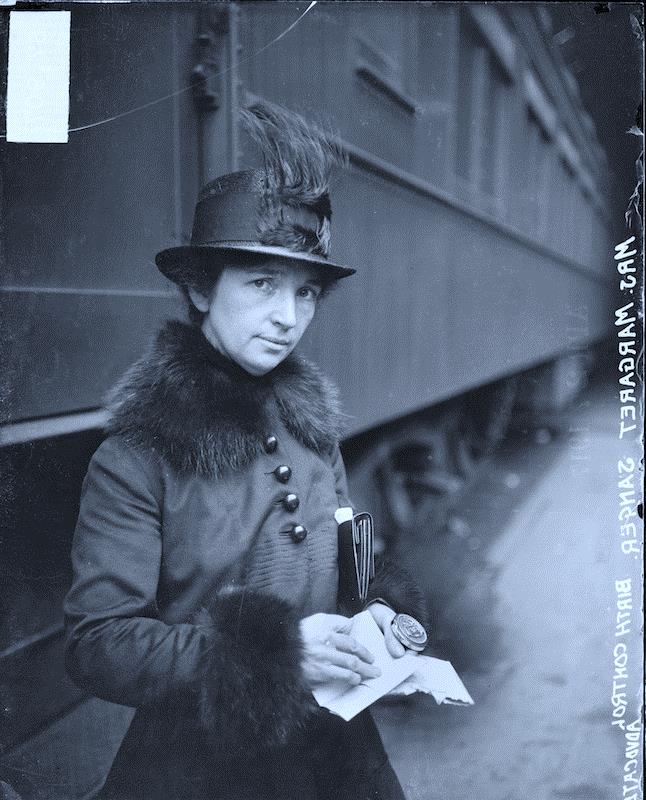
With the rise of the eugenics movement in the U.S., Margaret Sanger wrote an article in the Birth Control Review, which she founded in 1917, entitled, “Birth Control and Racial Betterment,” in which she stated, “Before eugenicists and others who are laboring for racial betterment can succeed, they must first clear the way for birth control. Like the advocates for birth control, the eugenicists, for instance, are seeking to assist the race toward the elimination of the unfit. Both are seeking a single end but they lay emphasis on different methods.” The American Birth Control League was founded on November 10, 1921, during the First American Birth Control Conference held in New York. Board of Directors members included: C.C. Little, who became president of the American Eugenics Society in 1929, and Eleanor Roosevelt. In 1924, Raymond B. Fosdick, who was a board member of the Rockefeller Institute for Medical Research, became president of the Rockefeller Foundation and General Education Board in 1936, and a leading figure in the American Eugenics Society, wrote a letter to John D. Rockefeller III requesting financial support for Sanger’s Birth Control League. Days later J.D. Rockefeller III replied with authorization to pledge funds. Fosdick also served on the general counsel of the American Birth Control League. In 1926, Sanger attended a Klu Klux Klan rally in Silver Lake, New Jersey, and recounted the event in her autobiography stating, “I accepted an invitation to talk to the women’s branch of the Klu Klux Klan … I saw through the door dim figures parading with banners and illuminated crosses … I was escorted to the platform, was introduced, and began to speak … In the end, through simple illustrations I believed I had accomplished my purpose. A dozen invitations to speak to similar groups were proffered.”
In February of 1935, Sanger’s Birth Control Review announced a resolution by the American Birth Control League to unite with the American Eugenics Society in formulating plans to inform families of “where they may best obtain medical advice in a strictly legal fashion as to the limitations of families by methods in accordance with their religious convictions.” The Lasker Foundation reported that Mary Lasker was apparently so impressed by Sanger’s “bravery and drawn by the idea that people should determine the size of their own families, [that] Lasker made a donation to the American Birth Control League and subsequently joined its board.” Soon after, in 1939, the American Birth Control League merged with the Birth Control Federation of America, from which Mary Lasker served as secretary on the Executive Committee. Some notable individuals on the board included: president of the American Eugenics Society – C.C. Little, president of the Pathfinder Fund and heir to the Proctor & Gamble fortune – Clarence Gamble, Carola Warburg Rothschild and Ann Vanderbilt. Mary Lasker’s husband, Albert, donated $20,000 to one of the first undertakings of the Birth Control Federation of America, known as the “Negro Project,” which sought to reduce the birth rate of the black population nation-wide, particularly in the south. They planned to hire 3 or 4 black ministers to travel throughout the south spreading birth control propaganda, as they believed “the most successful educational approach to the Negro is through a religious appeal.” In a letter written to Clarence Gamble, Sanger stated, “The ministers work is also important and also he should be trained, perhaps by the Federation as to the ideals and the goal that we hope to reach. We do not want the word to go out that we want to exterminate the Negro population and the minister is the man who can straighten out that idea if it ever occurs to any of their more rebellious members.”
Loading...



